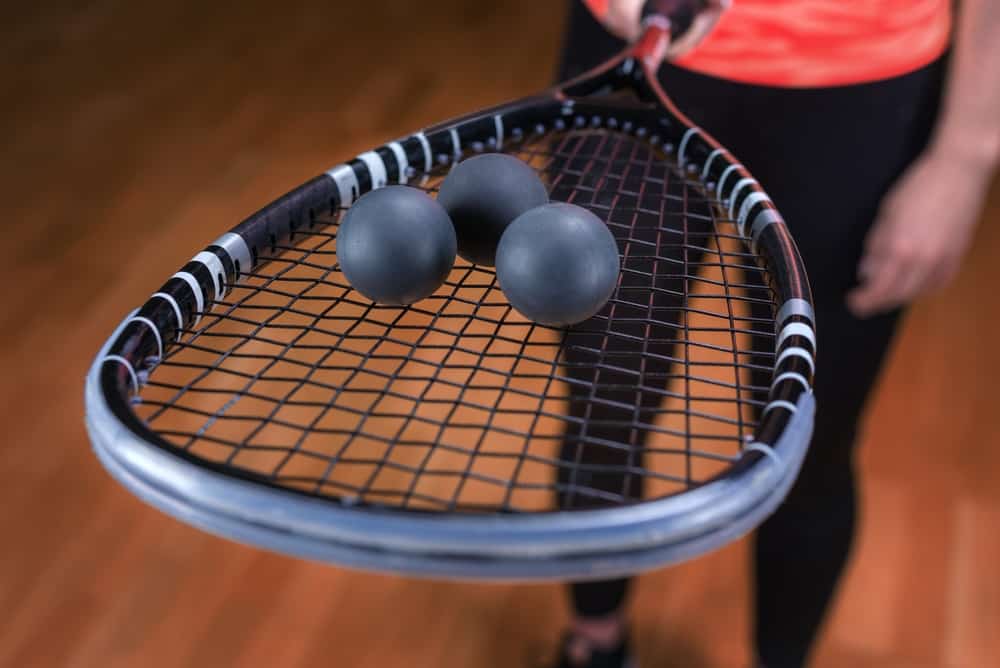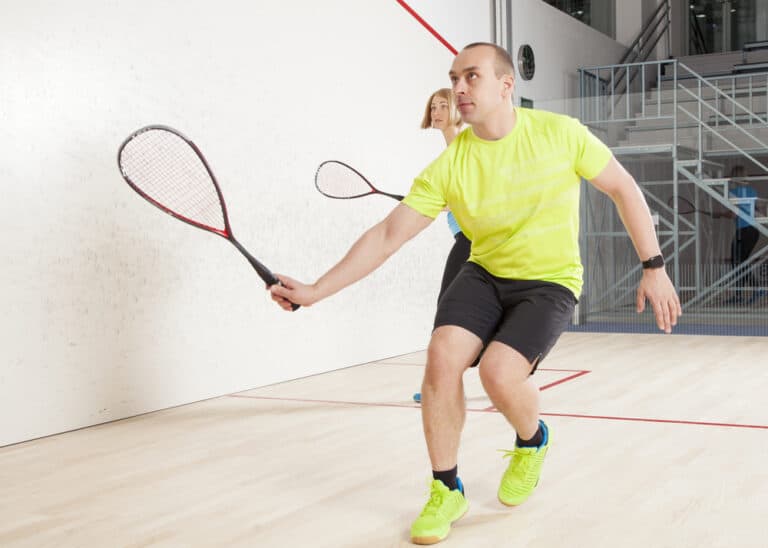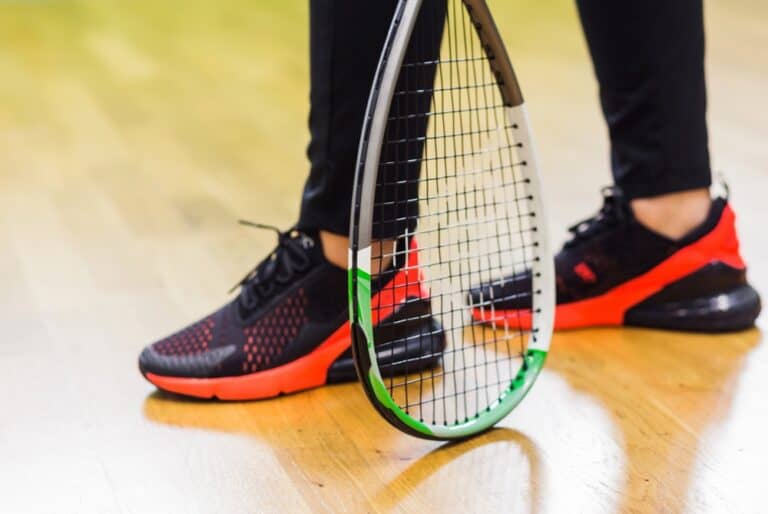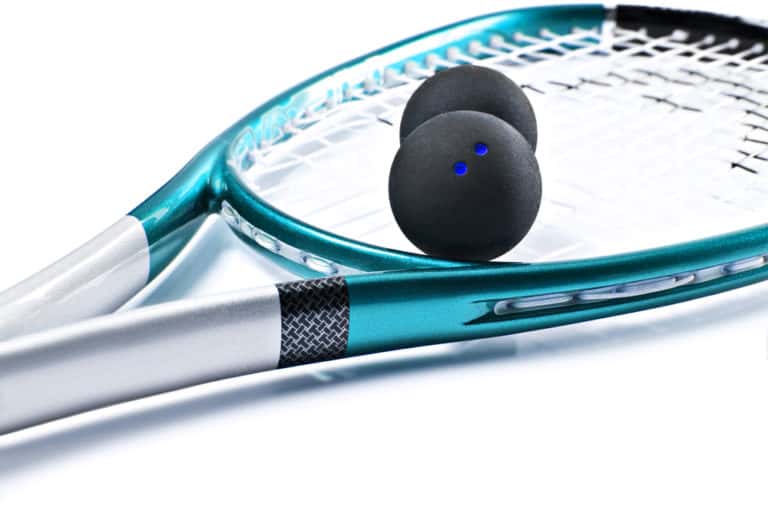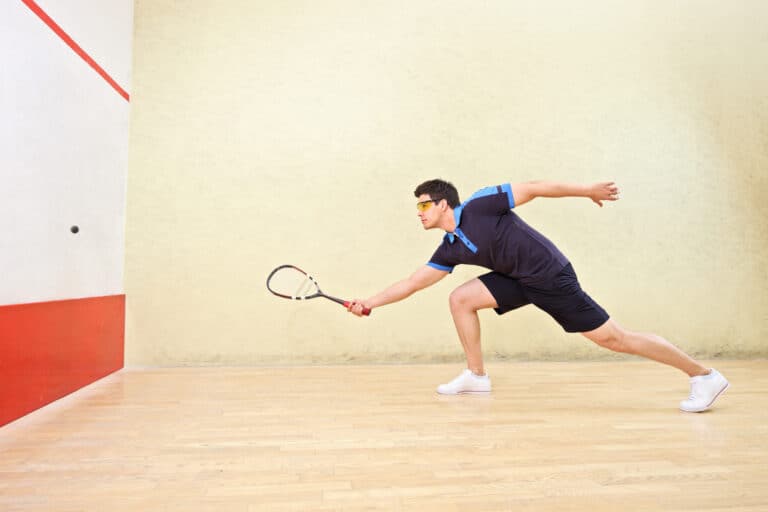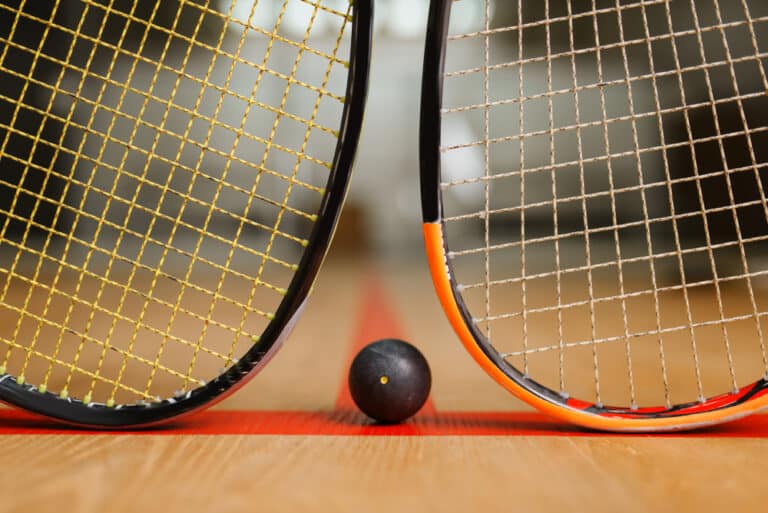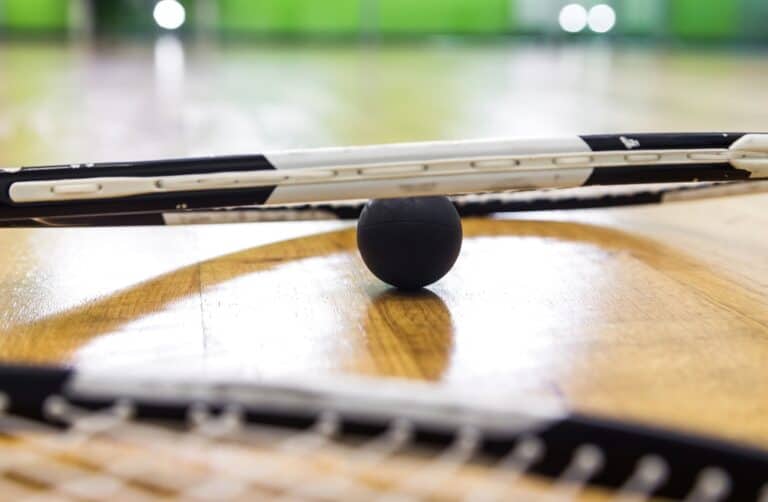Why Do Squash Balls Get Hot?
Anyone who has played a game of squash will have noticed that the ball becomes hotter throughout the course of the game, and as the ball warms up, it performs and responds in different ways when struck or bounced. This phenomenon is puzzling to some players, leading many to wonder why squash balls get hot when they are played.
Squash balls get hot because they rapidly contract and expand when struck or bounced. This rapid change of shape causes the rubber and compound materials of the ball, as well as the air within the ball, to heat up. The ball temperature reaches roughly 20°C, making the ball more responsive.
Squash balls can reach temperatures exceeding 20°C during an intense game, and this may come as a surprise to new players. However, there is very good reason for this temperature change, and the game of squash would not be the same without it. Let’s explore the reasons why squash balls get hot and find out how this affects the game.
Why Do Squash Balls Get So Hot?
Squash balls are unique and interesting objects. These balls are soft and firm simultaneously, and they barely bounce at all until they heat up. These balls can become surprisingly hot when played, which leads to many questions that most players do not know the answers to.
Why do squash balls get so hot? The truth is that squash balls get hot due to internal air pressure, stored kinetic energy, heat transfer, and friction.
A squash ball is made from a combination of raw butyl rubber and synthetic and natural compounds. These materials are formed into two halves of a hollow sphere and heated to be press-fit together, which traps air within the center of the ball.
The rubbers and compounds that the ball is made from are sensitive to heat, but they also store heat very well. When the rubber and the air within the ball is cool, the ball feels soft, but as it is played, it is struck multiple times against hard surfaces, including walls, the floor, and squash racquets.
As the ball is struck, it deforms significantly and very quickly. This rapid change in shape, including a rapid expansion and contraction of the rubber and the air within the ball, causes the ball to heat up.
The movement of the materials and the trapped air within the ball causes excitement within the molecules of the materials, which then have nowhere to go but to be transferred around and within the ball itself.
This causes the air within the ball to heat up, increasing the air pressure within the ball. As the rubber and material compound heat up, they become more malleable, which allows the pressurized air to press against the internal surface of the ball more effectively, causing the ball to expand slightly.
When the ball has expanded due to the heat and increased air pressure, it has nothing left to do but store as much heat as possible until it is allowed to cool.
These factors cause the ball to become significantly warmer and change the way the ball responds during the game as well.
How Does The Temperature Change Affect The Ball?
The rapid contraction and expansion of the squash ball when it is struck or struck against surfaces causes the ball to heat up by friction and kinetic energy, combined with internal air pressure. This increase in temperature is very apparent and can be easily noticed by simply touching the ball.
These effects do more than just make the ball hot, but they also cause the ball to respond very differently during gameplay.
When the ball heats up, the rubber that it is made from becomes more malleable. This increased flexibility, combined with higher air pressure within the ball, makes the ball firmer but also more reactive.
This means that when the ball is heated, it does not store energy as well and rather reflects it. This means that when it is struck or bounced, rather than deforming and absorbing the impact, it reflects the kinetic energy, causing the ball to bounce significantly further.
As the ball bounces better when it is warm, it also travels faster. This increases the distance of every bounce and causes the ball to be far more reactive and unpredictable.
When the ball is in this state, it is easier to play with in some ways, as the ball bounces further, so the players do not have to hit as hard, but it is also more reactive, which means that the ball is less forgiving of misplaced shots, which makes the game far more challenging.
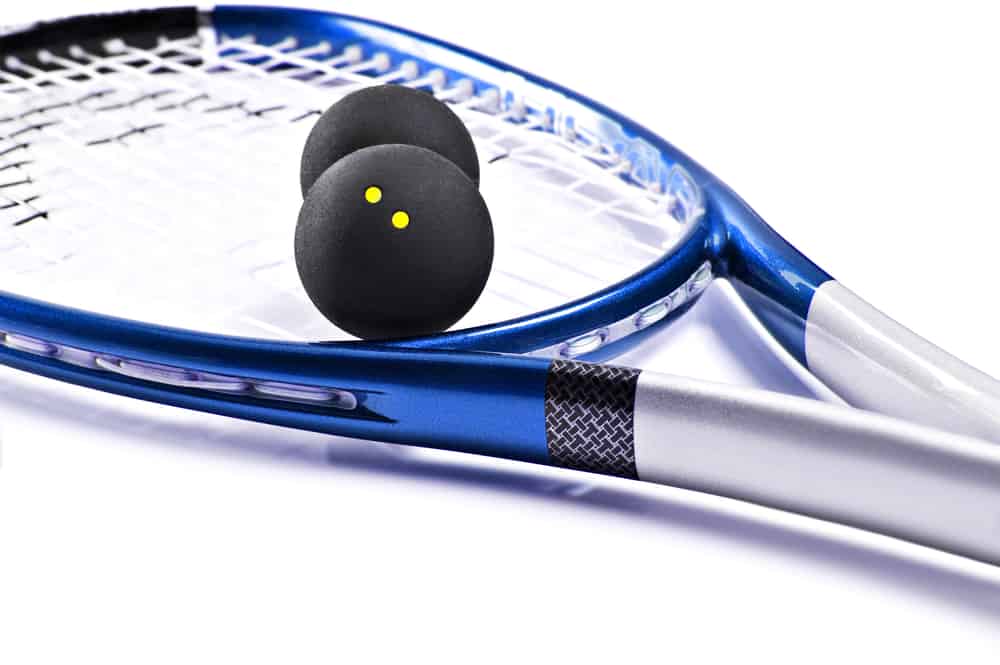
Are High Squash Ball Temperatures Better?
The fact that squash balls respond so differently when they are heated leads many new players to wonder if they should use a ball that can sustain a higher temperature or if they should use a ball that hats up more easily.
The truth is that there are different squash balls for players with different skill levels. Beginner squash players should use balls that are designed for players with less skill. These balls are usually slightly larger and made from rubber and compounds that heat up more quickly and hold heat better.
This allows the ball to bounce significantly higher and further and travel more quickly, making the ball easier to play with overall, and the larger size makes the ball more forgiving as well, which is ideal for beginners.
Advanced-level players should use balls that are more challenging. These balls heat up more slowly, and they retain heat less well. these balls are also slightly smaller, and all of these factors make them more challenging to use.
At the end of it, it is always better to use a squash ball that suits your skill level and playing style, and every squash ball will play better as it is heated, regardless of what type of ball it is.
High squash ball temperatures are usually better for all types of players, as it makes the sport more enjoyable overall.
Conclusion
At the end of it, squash balls heat up when they are used simply because they are rapidly compressed and then rapidly expand back to their original shape, causing the materials and air within the ball to heat up.
The way the ball responds when warmer changes the way the game is played and significantly affects the performance of the players in the match. Squash balls are at their best when they are warm, and the sweet spot for best performance is roughly 20°C (68°F).

